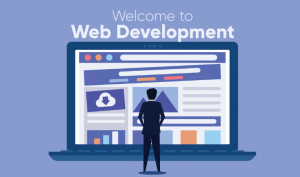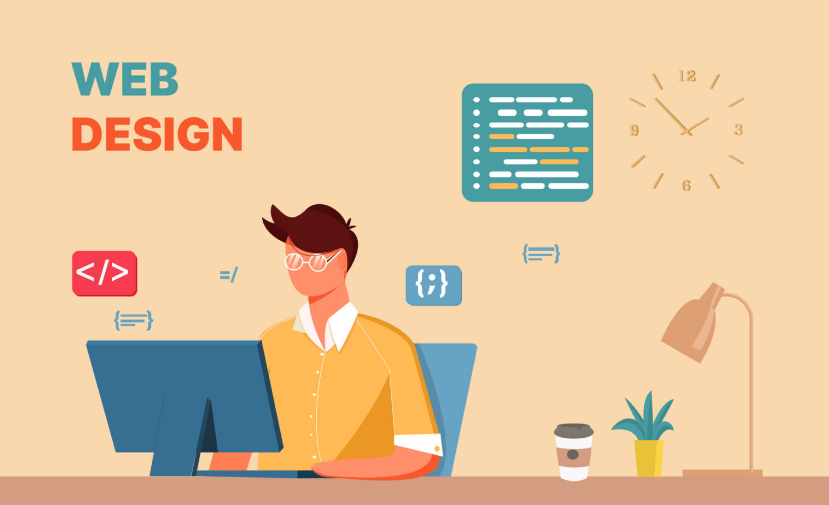Learn how long it takes to learn web design in this blog which is both informative and helpful for your practical approach. What is conceptual is translated into graphics by web designers. Images, typography, colors, text, negative space, and structure work together to create a user experience as well as a means of communicating ideas.
A smart web designer recognizes the importance of each component of a design. They style each aspect on a granular level, never losing sight of how the elements will come together and operate in achieving the design’s overall aims. It doesn’t matter how beautiful a website’s aesthetics are if it lacks organization. Each page’s arrangement of ideas and graphics, as well as how visitors navigate through it, must be guided by logic. A smart web designer builds designs that give the most information in the fewest possible clicks.
There are various sub-disciplines within web design. Some designers specialize in areas such as user interface design (UI), user experience design (UX), search engine optimization (SEO), and other areas of expertise. You should know a little bit about all of these different aspects of web design as you start your career as a Web Designer Dubai and learn web design from scratch.
How to Learn Website Designing?
-
Understand the fundamentals of visual design
A layout’s broader structure is built up of lines that make up each letter, border, and division. Learning web design entails comprehending how lines are used to create order and balance in a layout.
Shapes
Squares, circles, and triangles are the three basic shapes in visual design. Squares and rectangles are good for content blocks, circles are good for buttons, and triangles are great for accompanying key messages or calls to action. Squares are connected with strength, circles with harmony and comfort, and triangles with importance and action, among other things.
Texture
Texture imitates the appearance of things in the actual world. We can tell if something is rough or smooth based on its texture. Textures can be found all over the web. Be conscious of the various textures that can make your designs more fascinating and give them a sense of physicality, from paperlike backgrounds to the colorful wisps of a Gaussian blur.
Color
The color theory should be learned if you want to develop designs that aren’t a strain on the eyes. You’ll be a better web designer if you understand the color wheel, complementary colors, contrasting colors, and the feelings that different colors evoke.
-
Understand the fundamentals of HTML
The hypertext markup language (HTML) specifies how a website’s content, graphics, navigation, and other elements should appear in a user’s web browser. Even if you’re utilizing a visual-based design software like Webflow, it’s still beneficial to have some understanding of HTML.
HTML tags are the commands that a browser employs to build a webpage. These tags are in charge of headings, paragraphs, links, and images. You’ll want to understand how header tags like H1, H2, and H3 are used to organize information. Header tags influence how web crawlers classify a design and how it appears in organic search results.
-
Comprehend CSS
CSS (or cascading style sheets) is a set of instructions for styling and modifying the appearance of HTML elements. CSS allows you to do things like apply typefaces, add padding, establish orientation, choose colors, and even create grids.
Understanding CSS will enable you to design unique-looking websites and adapt current templates.

-
Understand the fundamentals of user experience design
UX is the magic that transforms a website from a static collection of elements to something that engages with the emotions of the person scrolling through it.
Your audience will benefit from the color scheme, content, typography, layout, and images. Precision and generating feelings are at the heart of user experience design. It provides not only a pleasant journey but also an encounter with the entity or business behind the web design.
-
Find out more about typography.
In web design, typography serves a variety of functions. First and foremost, it serves the practical aim of making material readable. However, it can also be used as decoration, and the employment of stylized typography in a tasteful manner can add to the overall look.
Understand the Key Concepts of Web Design
This is how you will learn web design from scratch. Some designers work in teams to cover many areas of a website’s operation and aesthetic, with each member specializing in a specific field, while others can work on different aspects of the above features separately. In any event, web design is the field of digital products that must be effective and user-centered in the vast majority of circumstances.
FAQs
Is Web Designing Easy to Learn?
It may appear simple at first because you can learn the fundamentals of HTML and CSS in a matter of months. However, as you grow in this field, you may find it increasingly difficult. To stay up with all the changes, you must continue to learn new technology.
What Do I Need to Learn to be a Web Designer?
- Basic Designing Tools. …
- UX/UI And Visual Design. …
- HTML & CSS. …
- Programming Languages. …
- Web Server Management. …
- Search Engine Optimization (SEO) …
- Content Management System (CMS) …
- Digital Marketing.
How Long Does it Take to Learn Web Design?
Learning web programming from the ground up takes about 5 to 6 months. This is assuming you study for a few hours each day. Some people can learn in a matter of months. Others, on the other hand, require a bit more than a year.
Conclusion
There was a time, not so long ago, when manually writing the code behind a web design necessitated a thorough mastery of HTML and CSS. It’s now possible to build together a website and launch it in a short amount of time using no-code solutions like Webflow. What used to take days or weeks can now be accomplished in hours.
Of course, there is a lot that goes into making a decent site design. You’ll become a more well-rounded designer if you learn the fundamentals of visual design, the essentials of UI and UX, and learn web design and development.







